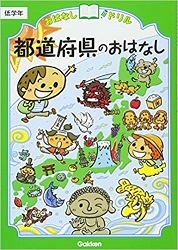Welcome to 都道府県のおはなし 低学年 - Stories of the Japanese Prefectures 
Week 1 - Pages 6-9
Prereading thread: Link
Week 2: Link
Want more information about this book? Stories of the Japanese Prefectures Home Thread
Want to read more books at this level? Absolute Beginner Book Club Home Thread

Discussion Guidelines 
- Please ask questions, no matter how simple they may be! This is the Absolute Beginners Book Club, so if you have a question, chances are someone else has the same question and will be glad you asked.
- When asking for help, please mention the page number. Also do check before posting that your question hasn’t already been asked. You can use the search function to search within the thread.
- If you share you translation, please hide the translation so people don’t want to see it yet don’t see it accidentally. Click on the cog icon above the text entry box and select either “Blur Spoiler” or “Hide Details”.
Screen shot

Resources 
- Vocabulary sheet - we use a shared Google sheet to make a list of vocabulary in the book. Creating this sheet is a shared effort so all are welcome to contribute. If you are doing this for the first time please read the instructions on the first page. Only add words if you are reasonably sure you are right - if you are not sure then ask in the thread instead.
- Jisho is a popular online Japanese-English dictionary.
- ichi.moe is a tool for parsing out sentences. You can type/paste in a whole sentence and it will try and break the sentence down into its individual parts. As Japanese doesn’t use spaces between words this can be really helpful when you are first starting out. It’s also useful when you don’t recognise the conjugation of a word, or when a group of words form a set expression.
- Deepl will translate a sentence from Japanese to English. It’s obviously not going to be right all the time, so if you want to check your translation it’s often better to ask in the thread. Having said that, it often gives a good translation, especially with more formal prose like in this book. When you know the words but can’t put them all together this can be really helpful for pointing you in the right direction.
- How to install a Japanese keyboard - if you don’t know how to type in Japanese on your device this guide from the makers of Wanikani will help you out.
Participation poll
- I’m reading along

- I’m planning to read but I haven’t started yet

0 voters




